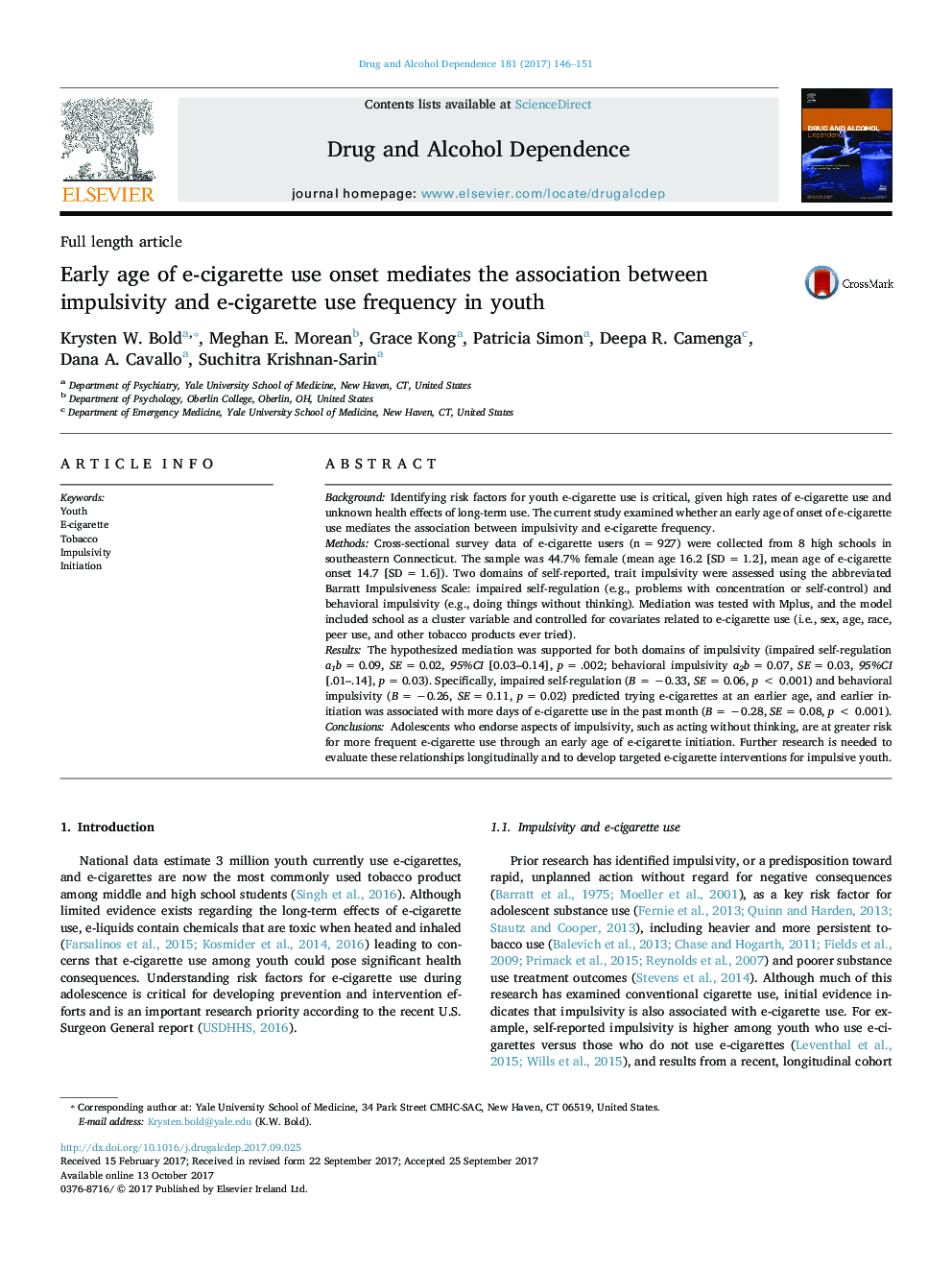| Article ID | Journal | Published Year | Pages | File Type |
|---|---|---|---|---|
| 5119918 | Drug and Alcohol Dependence | 2017 | 6 Pages |
â¢School-wide surveys assessed e-cigarette use behaviors among high school students.â¢Greater impulsivity was associated with trying e-cigarettes at an earlier age.â¢Early age of onset was associated with more frequent e-cigarette use.â¢Age of onset mediated the association between impulsivity and e-cigarette frequency.
BackgroundIdentifying risk factors for youth e-cigarette use is critical, given high rates of e-cigarette use and unknown health effects of long-term use. The current study examined whether an early age of onset of e-cigarette use mediates the association between impulsivity and e-cigarette frequency.MethodsCross-sectional survey data of e-cigarette users (n = 927) were collected from 8 high schools in southeastern Connecticut. The sample was 44.7% female (mean age 16.2 [SD = 1.2], mean age of e-cigarette onset 14.7 [SD = 1.6]). Two domains of self-reported, trait impulsivity were assessed using the abbreviated Barratt Impulsiveness Scale: impaired self-regulation (e.g., problems with concentration or self-control) and behavioral impulsivity (e.g., doing things without thinking). Mediation was tested with Mplus, and the model included school as a cluster variable and controlled for covariates related to e-cigarette use (i.e., sex, age, race, peer use, and other tobacco products ever tried).ResultsThe hypothesized mediation was supported for both domains of impulsivity (impaired self-regulation a1b = 0.09, SE = 0.02, 95%CI [0.03-0.14], p = .002; behavioral impulsivity a2b = 0.07, SE = 0.03, 95%CI [.01-.14], p = 0.03). Specifically, impaired self-regulation (B = â0.33, SE = 0.06, p < 0.001) and behavioral impulsivity (B = â0.26, SE = 0.11, p = 0.02) predicted trying e-cigarettes at an earlier age, and earlier initiation was associated with more days of e-cigarette use in the past month (B = â0.28, SE = 0.08, p < 0.001).ConclusionsAdolescents who endorse aspects of impulsivity, such as acting without thinking, are at greater risk for more frequent e-cigarette use through an early age of e-cigarette initiation. Further research is needed to evaluate these relationships longitudinally and to develop targeted e-cigarette interventions for impulsive youth.
